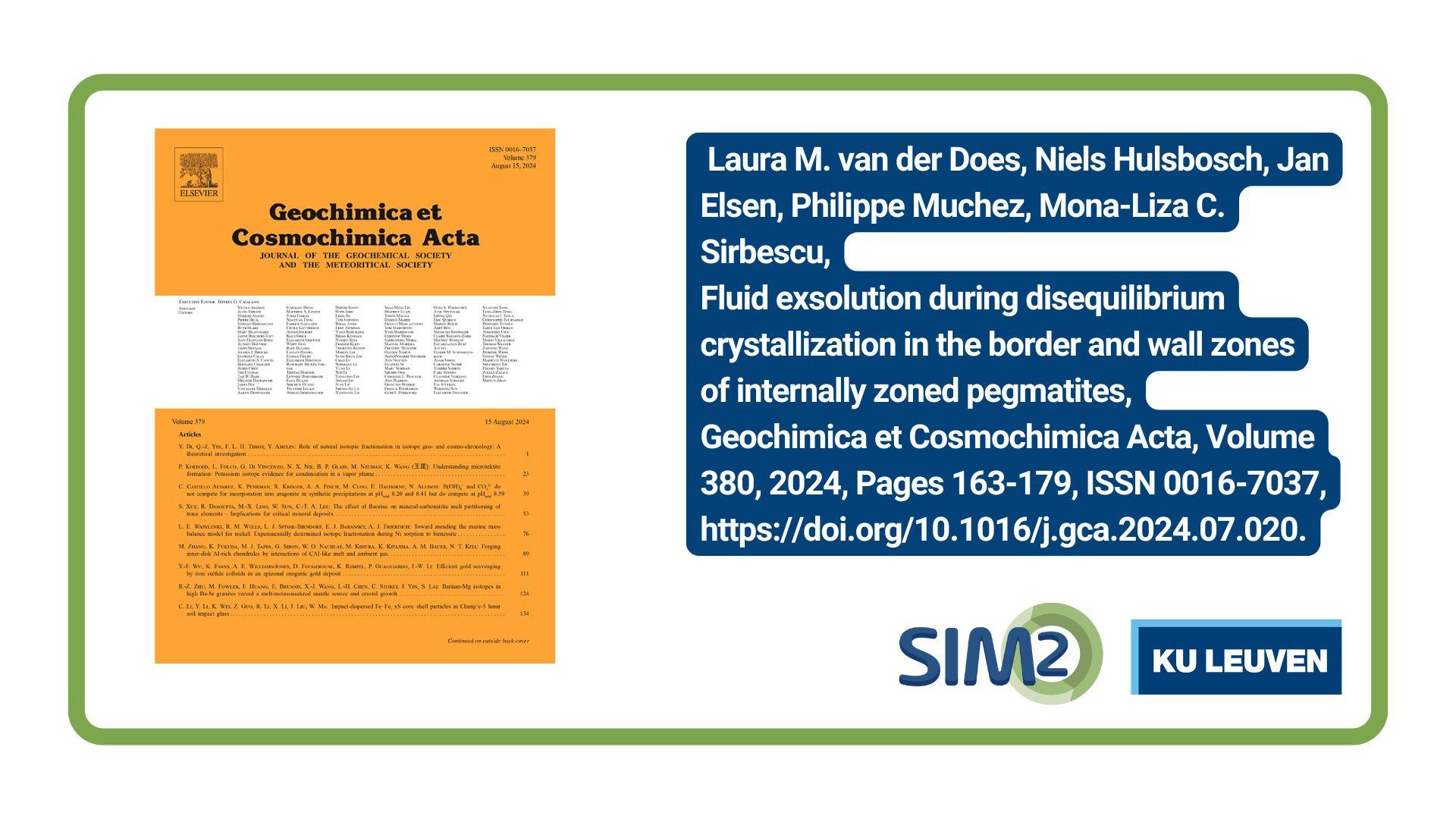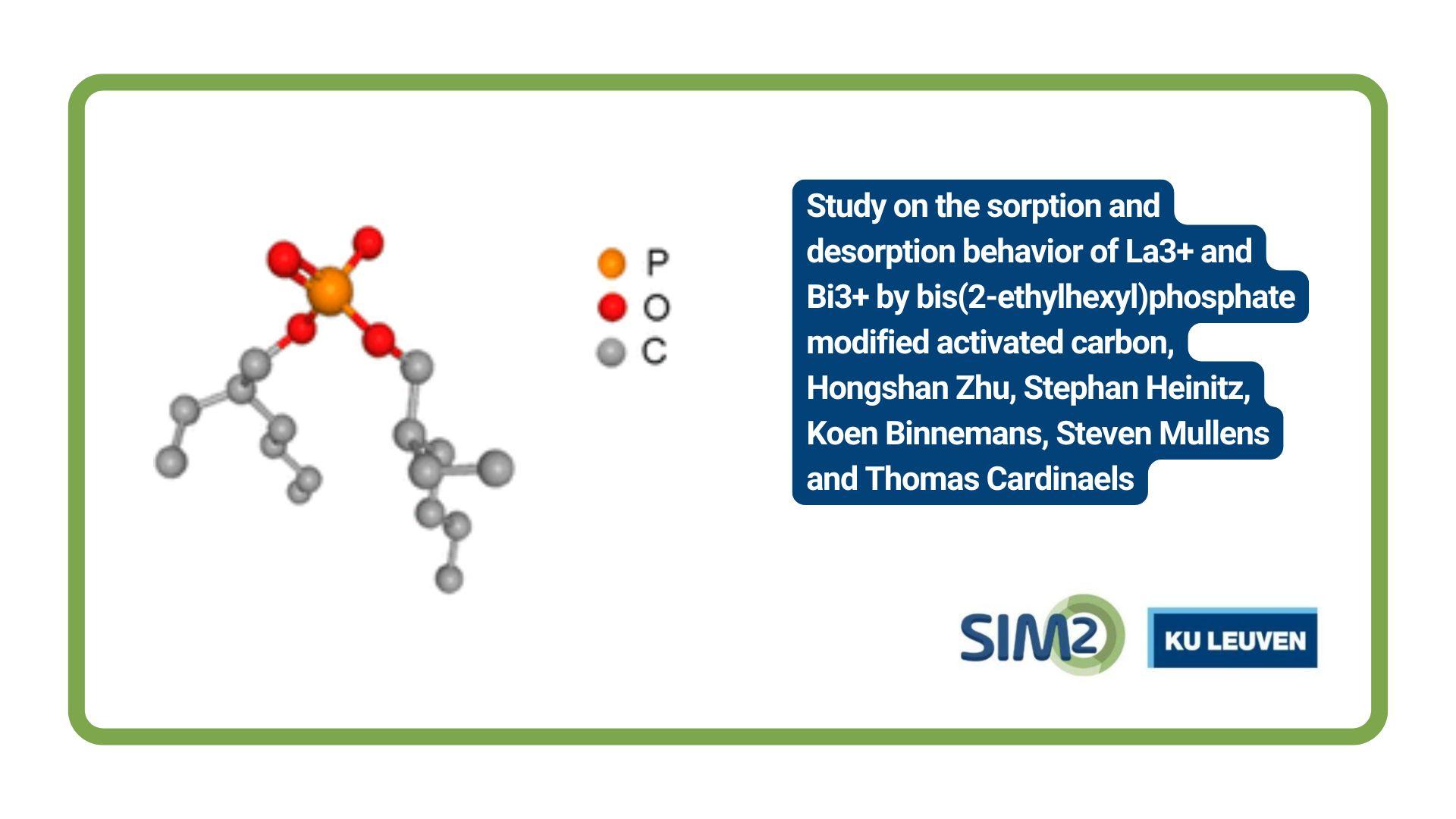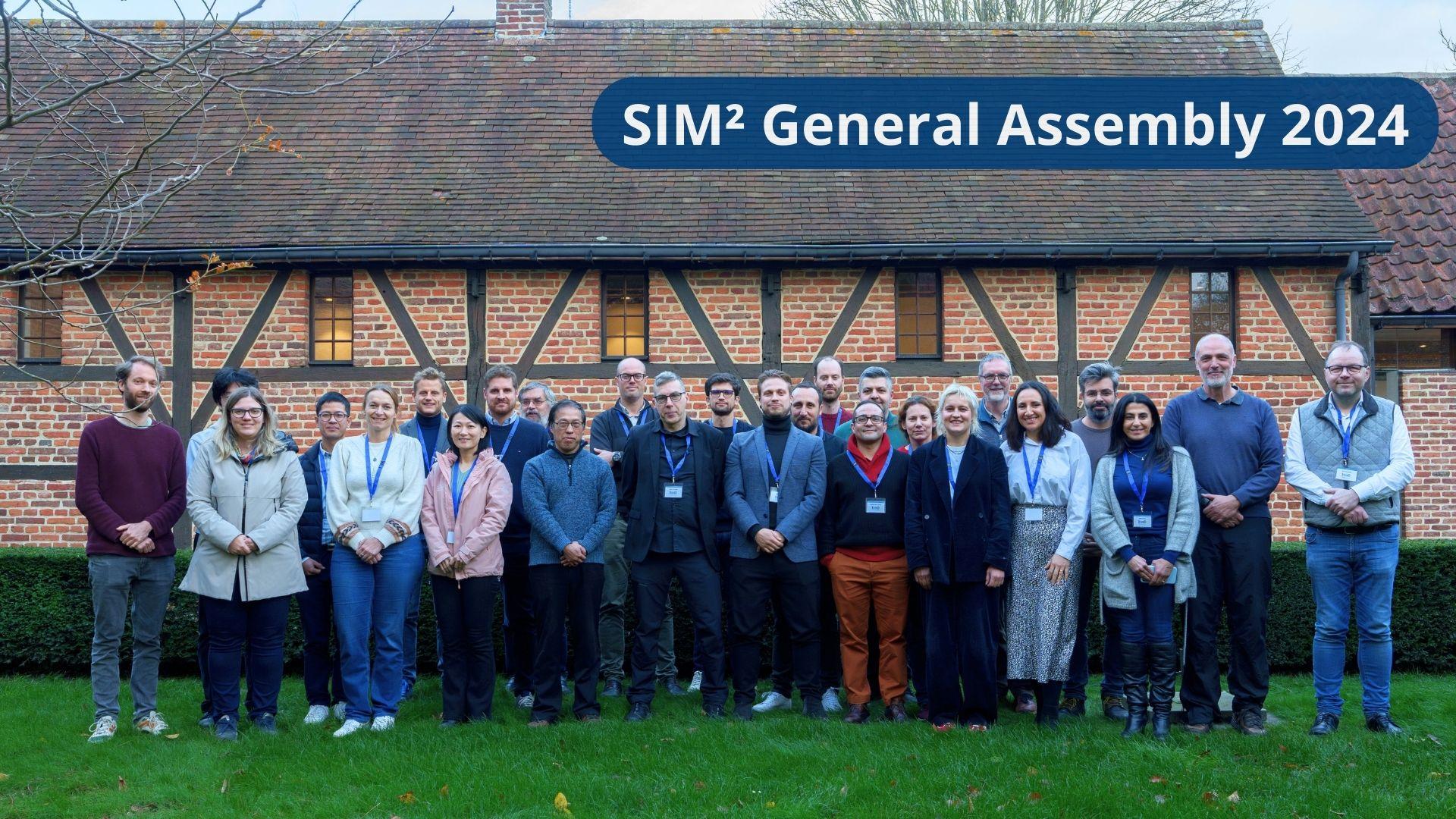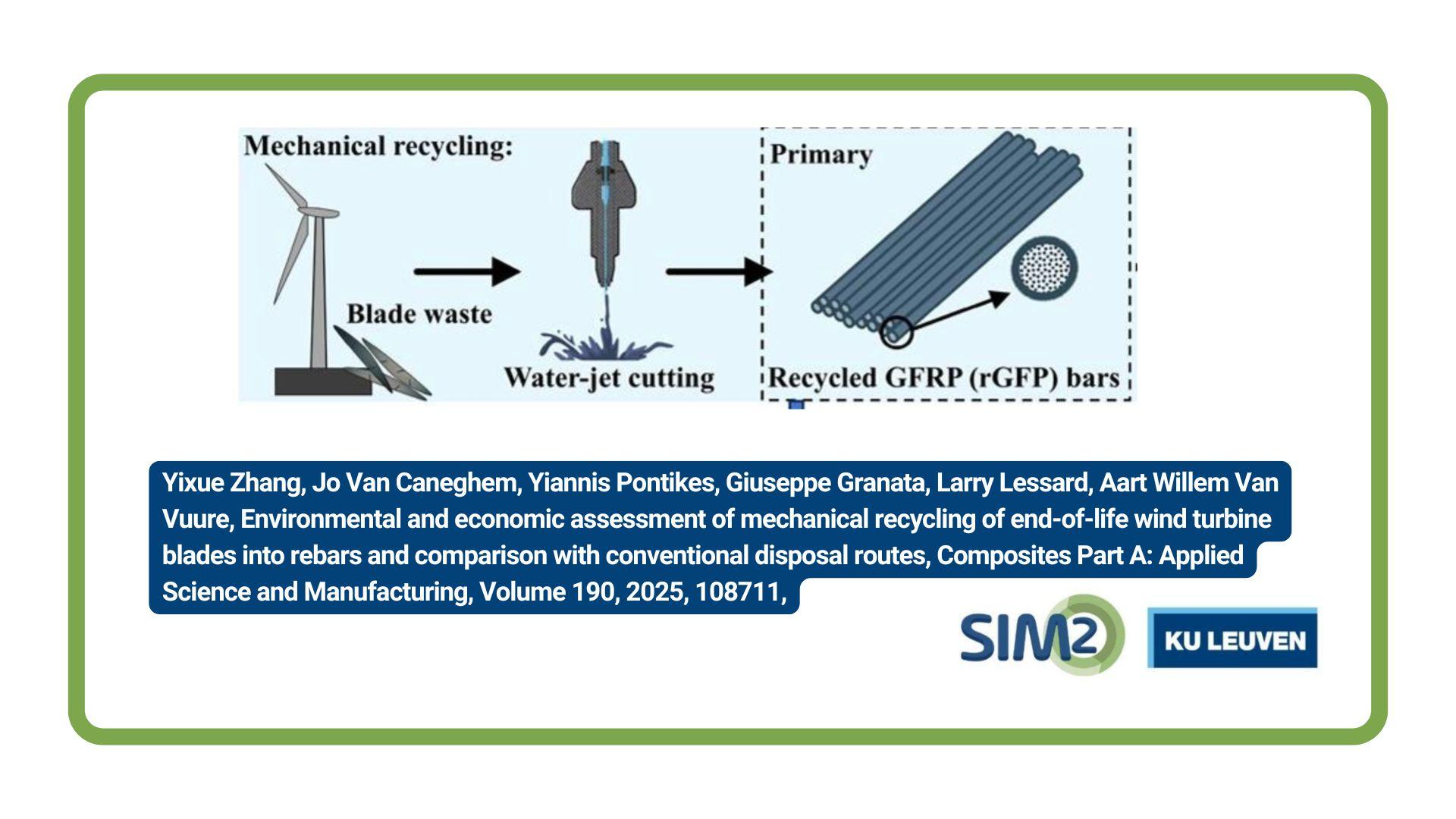Laura van der Does and colleagus from the Department of Earth and Environmental Sciences, KU Leuven, have a new publication on the subject of fluid exsolution during disequilibrium crystallization in the border and wall zones of internally zoned pegmatites. The paper is published in the 1st September issue of Geochimica et Cosmochimica Acta.
Pegmatites are an important source of rare and strategic metals including Li, Nb, Ta and Sn. Understanding the processes occurring during pegmatite formation is the first step in understanding how and where in the pegmatite system these metals are enriched and can form ore deposits. The timing of fluid saturation and exsolution in the pegmatitic melt is important as it can influence the formation of ore deposits and prevent sequestration of fluid mobile elements in the magma. Researchers from KU Leuven and the University of Central Michigan (USA) have published a paper on the fluid exsolution in pegmatites during disequilibrium crystallization.
Fluid inclusion studies were carried out on tourmaline from the Emmons pegmatite (Maine, USA) by micro-analytical techniques such as microthermometry, Raman spectroscopy and laser ablation inductively coupled plasma mass spectrometry (LA-ICP-MS). Two different tourmaline textures were identified petrographically: unidirectional solidification textures (UST), composed of prismatic, inwards flaring tourmaline, and quartz-tourmaline intergrowths (QTIs), composed of a prismatic tourmaline surrounded by skeletal intergrowths with quartz. Fluid and melt inclusions are found in both tourmaline types, indicating that fluid saturation and exsolution occurs early in the pegmatite crystallization. In the prismatic tourmaline, fluid inclusions tend to be fewer, but often larger. Whereas in the skeletal tourmaline more fluid inclusions occur and the field often contain abundant fluid inclusions. This could indicate a shift from very local exsolution of small bubble at the mineral-melt interface to a more pervasive fluid exsolution.
Microthermometry and Raman analyses show that the fluid has an H2O-NaCl-CO2-(N2-CH4) composition that does not change significantly between the different tourmaline textures. LA-ICP-MS analyses indicated that the most common elements in the fluid inclusions are the alkali metals (Na, Li, Cs, K and Rb). Variations in composition appear related to temperature variations between the different tourmalines.
Crystallization temperatures estimated from the fluid inclusion isochores are very low (312-440˚C) and confirm that the tourmaline textures formed during high degrees of undercooling. The temperature variations indicate that the skeletal tourmaline crystallized after a nucleation delay, lowering the crystallization temperature. The comparison of tourmaline morphologies and estimated crystallization textures indicate that temperature is not the sole influence on the morphologies, but that the amount of fluid may also have an influence.
The early fluid exsolution in the pegmatites indicates that fluid mobile elements, such as Sn and W, likely concentrated in the exsolved fluid and were removed from the bulk pegmatite melt.
Reference
Laura M. van der Does, Niels Hulsbosch, Jan Elsen, Philippe Muchez, Mona-Liza C. Sirbescu,
Fluid exsolution during disequilibrium crystallization in the border and wall zones of internally zoned pegmatites,
Geochimica et Cosmochimica Acta, Volume 380, 2024, Pages 163-179, ISSN 0016-7037, https://doi.org/10.1016/j.gca.2024.07.020.
Acknowledgements
This research is funded by the KU Leuven in the form of a PhD scholarship for Laura M. van der Does. The authors thank Fernando Prado Araujo for assistance with the Raman analyses and Marie-Christine Boiron and Chantal Peiffert (Université de Lorraine, CNRS) for their support with the LA-ICP-MS analyses.





